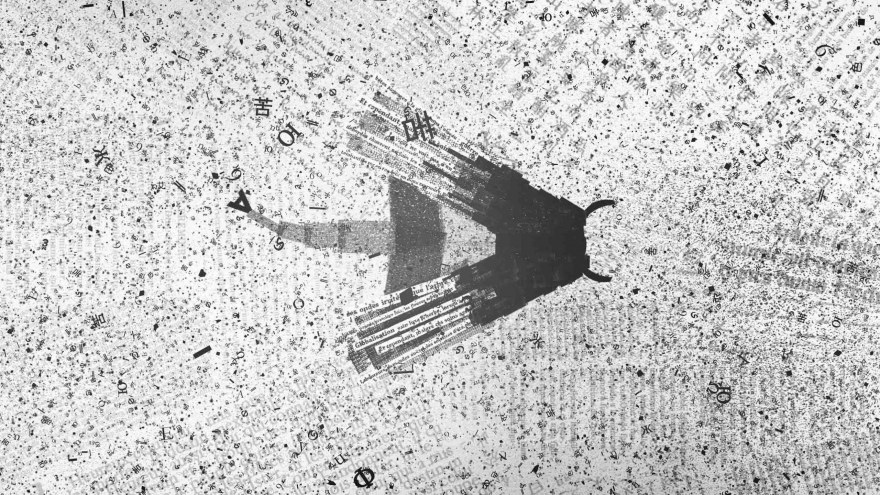Night cap with Hurlevent
Interview with Frédéric Doazan, director of Hurlevent
In Hurlevent, the signs, numbers and letters of a book, carried away by the wind, assemble themselves to take the shapes of various figures. Is this a way to evoke the power of language or of poetry?
I saw it more as if language had come to life. A breath that animates and causes a chain reaction. We see the world’s languages personified by little alphabet creatures who take flight headfirst into a raging wind. In a way, it is an allegory where we see alphabets, languages and cultures constructing themselves and aggressively fighting for their survival. We see them adapt, transform, collide, and support each other…
Is the central presence of wind a way to evoke the power of transformation and change, or is it a means to evoke something that is elusive, fleeting?
I found it interesting to give wind the role of narrator. A narrator in spite of itself. The wind brings about life. The wind sweeps away the little alphabet creatures with its gusts. And if the wind stops blowing, the story freezes… The wind gives rhythm to the film. It is elusive because we don’t know why it blows, nor where it comes from. It is merciless because it never ceases to disturb those little alphabet creatures. It creates, it destroys. The wind somewhat resembles time. The wind passes, we are subjected it, we counter it, we try to thwart its gusts in an attempt to reach eternity.
What techniques did you use to produce Hurlevent and how do they relate to the subject of the film?
All the animation is made up solely of typography. I was inspired by the visual poetry paintings of Hart Broudy, where you could see saturated typographical forms that made me think of curious little abstract creatures made up of words. I wanted to give life to these creatures, to animate them. It quickly became evident that the flip book technique was what we needed. Hurlevent is a giant flip book that is not flipped through with a human thumb but by the blowing wind. Technically, I started by creating all of the typography animation on the computer with After Effects. Then, I had the crazy idea to print every image of my animation and create a book that I intended to shoot image by image. I soon gave up on that idea when I realised that I would have to print and bind a book of over 7000 pages… so, I digitally overlaid all my animations on a blank book that I shot in stop motion turning from page to page. Even if I saved myself from having to print out 7000 pages, I accumulated over 10,000 layers on this project in After Effects…
You have made several short films, including Supervenus, which was a big success in France and abroad. What are some projects, themes or techniques that you would like to explore in the future?
I always have lots of projects in mind. Big ones and little ones. Silly film projects that make me laugh as well as more poetic films that make me dream. I like alternating between the two extremes, it gives me good creative balance. I prefer the idea of continuing to explore new techniques. For me at the moment, that is collage. I am currently finishing a short film improvised in surrealistic collage where a green woodpeckerthat resembles Godzilla faces off with the world of men… it is a far cry from Supervenus or Hurlevent. I’m also very open to the idea of experimenting with new mediums, such as audiovisual performance, video installations, and why not the documentary format. In any case, my desire is to always deliver through my creations a veritable visual and auditory experience. Something based more on feelings than intellect, based more on the sensory than on intrigue.
Are the any particular freedoms that the short film format allows you?
Yes! It’s a format that, despite being short, offers infinite possibilities. Moreover, I absolutely don’t see it as a “little” feature-length film, for me it is clearly an entirely different format. A bit like a mix between an experimental laboratory and a playground. Another freedom that I have with this format is that I can auto-produce my films. Up to now, I have always worked like that. I make my films on my own, getting by on a tight budget and with a very small team… For Hurlevent for example, the team consists of only two people: Vandy Roc for the sound design and myself. It is exhilarating to see that we can make films with total freedom and with such meager means. And for my more ambitious projects that will doubtlessly require a producer, I think we are pretty well off when it comes to freedom with all the financial aid and creative residences available.








